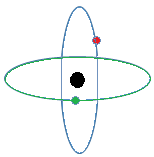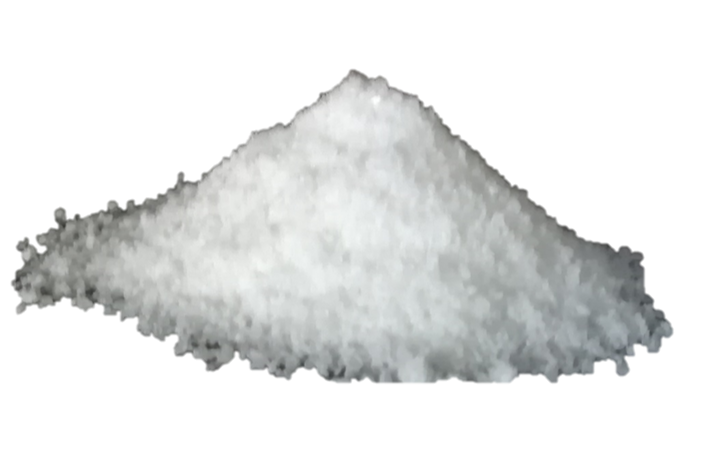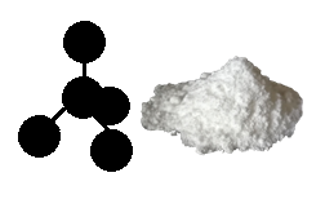CHEMISTRY FORM 2

- 1.1 Structure of the atom
- 1.2 Atomic Number and Mass Number
- 1.3 Isotopes
- 1.4 Energy levels and electron arrangement
- 1.5 Development of the Periodic Table
- 1.6 Relative Atomic Mass and Isotopes
- 1.7 Ion Formation
- 1.8 Chemical Formulae
- 1.9 Chemical Equations

- 2.1 Alkali metals (Group I elements)
- 2.2 Alkali Earth Metals (Group II elements)
- 2.3 Halogens (Group VII elements)
- 2.4 Noble gases (Group VIII elements)
- 2.5 Properties and Trends Across the Periodic Table

- 3.1 Bond
- 3.2 Ionic bond
- 3.3 Giant ionic structure
- 3.4 Covalent bond
- 3.5 Co-ordinate bond
- 3.6 Molecular structures
- 3.7 Giant covalent structures
- 3.8 Metallic Bond
- 3.9 Types of bond across a period
- 3.10 Oxides of elements in Period 3
- 3.11 Chlorides of Period 3 elements

- 4.1 What is a salt?
- 4.2 Types of salt
- 4.3 Solubility of salts in water
- 4.4 Methods of preparing salts
- 4.4.1 Reacting a Metal with an Acid
- 4.4.2 Reacting an Acid with a Base (Neutralization)
- 4.4.3 Reacting an Acid with a Carbonate (or hydrogencarbonate of metal)
- 4.4.4 Combining elements Directly (Direct Combination of elements)
- 4.4.5 Precipitation (Double decomposition)
- 4.5 Action of heat on salts
- 4.6 Uses of salts

- 5.1 Electrical conduction
- 5.2 Electrical conductivity of molten substances
- 5.3 Electrical conductivity of substances in aqueous state
- 5.4 Electrolysis
- 5.5 Applications of electrolysis

- 6.1 Allotropes of carbon
- 6.2 Chemical properties of carbon
- 6.3 Carbon (IV) oxide
- 6.4 Carbon (II) oxide (CO)
- 6.5 Large scale production of sodium carbonate and sodium hydrogencarbonate
- 6.6 Effect of carbon (II) oxide and carbon (IV) oxide on the environment
- 6.7 Carbon cycle

Structure of the Atom, and the Periodic Table: Chemical Equations
1.0 Structure of the Atom, and the Periodic Table
1.9 Chemical Equations
We have learnt in Section 1.8 how to write chemical formulae. This should enable us to write chemical equations. NB: To write correct chemical equations, we must first get the chemical formulae right. We will learn these through examples.
Example 1: Burning of carbon in oxygen
Observe how to write a chemical equation for the burning of carbon in oxygen.
(courtesy Youtube-equation for the burning of carbon in oxygen by Joseph Rabari)
Reactants: Carbon (C) and oxygen (O2)
Product: Carbon (IV) oxide (CO2)
We first write an equation to show reactants and products without balancing it.
C + O2 ⟶ CO2
There is one carbon atom on the left and right of the equation; so carbon atoms are balanced. Oxygen atoms are also balanced because there are 2 on each side. The equation happens to be balanced already.
But we need to indicate the physical states (state symbols) of the substances. Carbon is solid (s); the rest are gases (g). Hence the complete equation is
C(s) + O2(g) ⟶ CO2(g)
NB: A solid element is represented with the symbol of its atom (e.g. C).
Example 2: Reaction between magnesium and dilute hydrochloric acid
Reactants: Magnesium (Mg) and hydrochloric acid (HCl(aq))
Products: Magnesium chloride (MgCl2) and hydrogen gas (H2)
An equation showing reactants and products only is
Mg + HCl ⟶ MgCl2 + H2 unbalanced
Chlorine and hydrogen are not balanced; but putting 2 on HCl balances both of them. The complete equation, with the correct state symbols, is
Mg(s) + 2HCl(aq) ⟶ MgCl2(aq) + H2(g)
Example 3: Reaction between calcium carbonate and dilute hydrochloric acid
Observe a video on how to write a chemical equation for the reaction between calcium carbonate and dilute hydrochloric acid
(courtesy Youtube-equation for the reaction between CaCO3 and dilute hydrochloric acid by Joseph Rabari)
Reactants: Calcium carbonate (CaCO3) and hydrochloric acid (HCl)
Products: Calcium chloride (CaCl2), water (H2O), carbon (IV) oxide (CO2)
An equation showing reactants and products only is
CaCO3 + HCl ⟶ CaCl2 + H2O + CO2
Chlorine and hydrogen atoms are not balanced. Multiplying HCl by 2 solves the problem. The complete equation is
CaCO3(s) + 2HCl(aq) ⟶ CaCl2(aq) + H2O(l) + CO2(g)
Example 4: Reaction between potassium metal and water
Reactants: Potassium (K) and water (H2O)
Products: Potassium hydroxide (KOH) and hydrogen (H2)
An equation showing reactants and products only is
K + H2O ⟶ KOH + H2
Hydrogen atoms are not balanced. But this can be solved by putting 2 on K, H2O, and KOH.
2K(s) + 2H2O(l) ⟶ 2KOH(aq) + H2(g)
Example 5: Burning of aluminium in oxygen
Observe how to write a chemical equation for the burning of aluminium in oxygen.
(courtesy Youtube-equation for burning aluminium in oxygen by Joseph Rabari)
Reactants: Aluminium (Al) and oxygen (O2)
Product: Aluminium oxide (Al2O3)
An equation showing reactants and products only is
Al + O2 ⟶ Al2O3 unbalanced
Neither aluminium nor oxygen is balanced. Multiplying Al on the left by 2 will balance aluminium but not oxygen; so we try 4 (double 2). But in that case, we also put 2 on Al2O3. That leads to
4Al + O2 ⟶ 2Al2O3 unbalanced
There are six (6) oxygen atoms on the right but only 2 on the left; so we multiply O2 by 3. We obtain
4Al(s) + 3O2(g) ⟶ 2Al2O3(s)
Balancing equations is a trial-and-error exercise; but with practice, we can combine all these into one quick step. Also, when balancing, begin with the products and reactants having different elements combined (compounds), for example Al2O3. The free or uncombined elements (e.g. Al or O2) can accept any number so they are considered last. In the above case, we considered O2 last.
Include state symbols of the reactants and products as they are during the reaction (at the reaction temperatures). Text box 1.9 gives some guidelines on state symbols.
Text box 1.9 Guidelines for writing state symbols

Questions 1.9
Write balanced chemical equations for the following reactions.
- Burning of sodium in oxygen
- Reaction between sodium and water
- Reaction between magnesium and steam
- Reaction between zinc and dilute sulphuric acid
- Reaction between sodium hydroxide and hydrochloric acid
- Reaction between hydrochloric acid and copper (II) carbonate
- Reaction between sodium hydrogencarbonate and dilute sulphuric acid
Answers to Questions 1.9
Did you get all the state symbols right? We will get keener on state symbols as we move along, especially after discussing solubility of salts in Topic 4.
Project 1
Using a soft wire and moulding clay, or any other suitable materials around you, construct a neat model of sodium atom (Atomic number of sodium, Na = 11).
